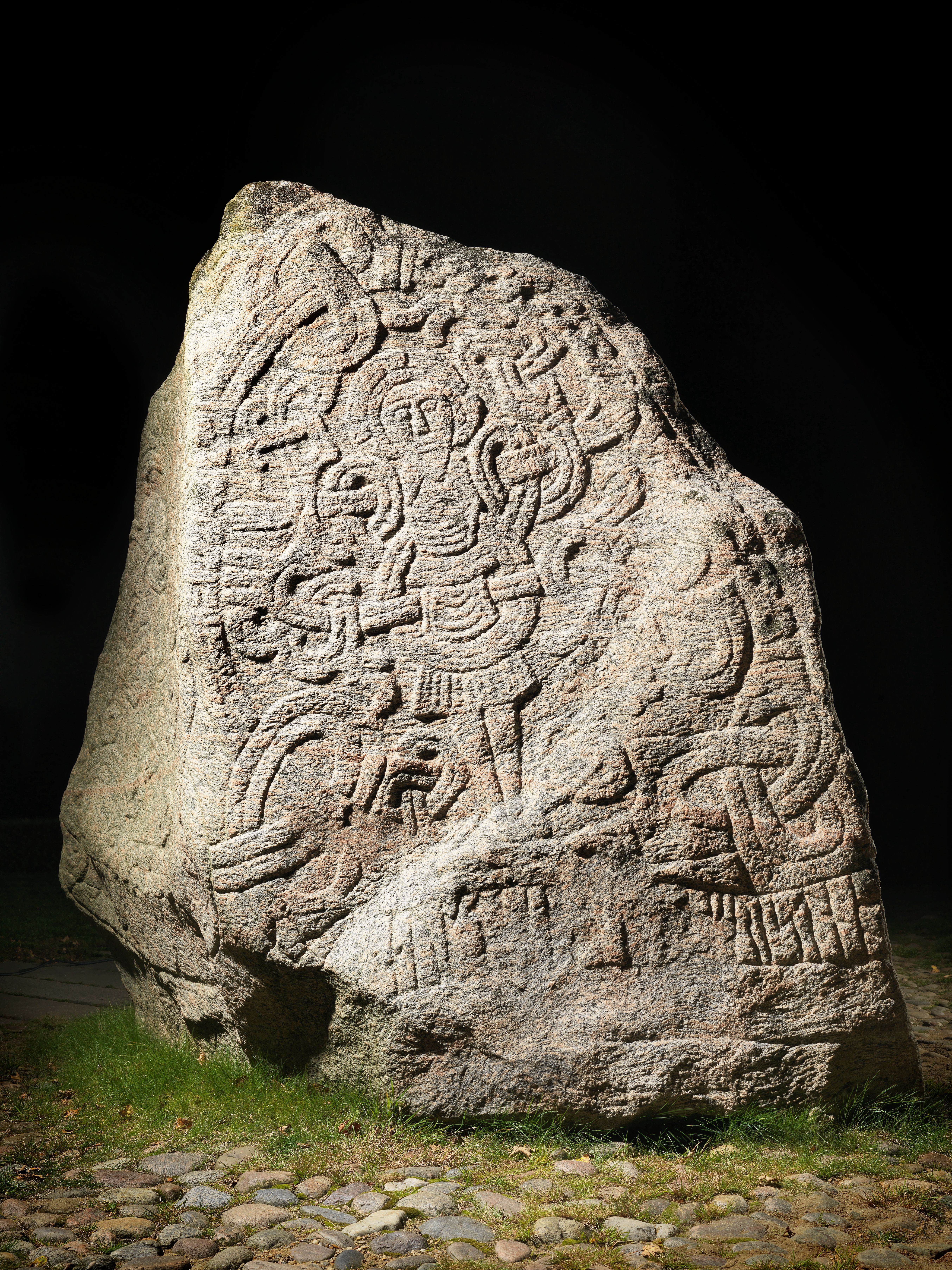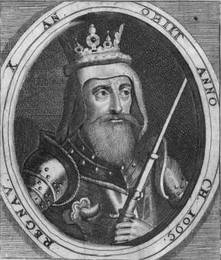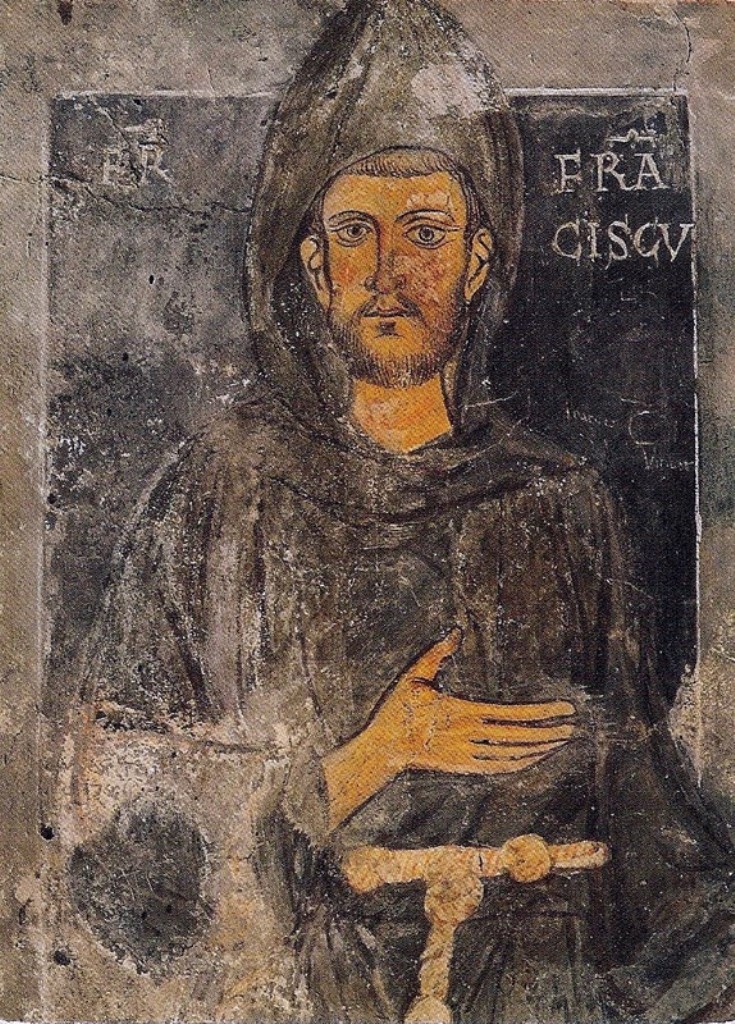|
Adolf IV Of Holstein
Adolf IV (before 1205 – 8 July 1261), was a Count of Schauenburg (1225–1238) and of Holstein (1227–1238), of the House of Schaumburg. Adolf was the eldest son of Adolf III of Schauenburg and Holstein by his second wife, Adelheid of Querfurt. Life Adolf IV won several victories against the Danes. In 1225 he won the Battle of Mölln against Albert II, Count of Weimar-Orlamünde. On 22 July 1227 with his coalition army Adolf was victorious in the Battle of Bornhöved against King Valdemar II of Denmark with his Danish army and German allies (the Welfs), and thus regained Holstein. In 1235 he founded Kiel and in 1238 Itzehoe. In 1238 he took part in a crusade in Livonia. In fulfilment of an oath taken during the heat of the Battle of Bornhöved, Adolf withdrew in 1238 to a Franciscan friary and in 1244 was ordained a priest in Rome (his two under-age sons passed into the guardianship of his son-in-law Duke Abel of Schleswig). Also in 1244 he founded Neustadt in ... [...More Info...] [...Related Items...] OR: [Wikipedia] [Google] [Baidu] |
County Of Holstein
Holstein (; nds, label=Northern Low Saxon, Holsteen; da, Holsten; Latin and historical en, Holsatia, italic=yes) is the region between the rivers Elbe and Eider. It is the southern half of Schleswig-Holstein, the northernmost state of Germany. Holstein once existed as the German County of Holstein (german: Grafschaft Holstein, links=no; 811–1474), the later Duchy of Holstein (german: Herzogtum Holstein, links=no; 1474–1866), and was the northernmost territory of the Holy Roman Empire. The history of Holstein is closely intertwined with the history of the Danish Duchy of Schleswig ( da, Slesvig, links=no). The capital of Holstein is Kiel. Holstein's name comes from the Holcetae, a Saxon tribe mentioned by Adam of Bremen as living on the north bank of the Elbe, to the west of Hamburg. The name means "dwellers in the wood" (Northern Low Saxon: ; german: Holzsassen, links=no). History Origins After the Migration Period of the Early Middle Ages, Holstein was adjacent to t ... [...More Info...] [...Related Items...] OR: [Wikipedia] [Google] [Baidu] |
Albert II, Count Of Weimar-Orlamünde
Albert may refer to: Companies * Albert (supermarket), a supermarket chain in the Czech Republic * Albert Heijn, a supermarket chain in the Netherlands * Albert Market, a street market in The Gambia * Albert Productions, a record label * Albert Computers, Inc., a computer manufacturer in the 1980s Entertainment * ''Albert'' (1985 film), a Czechoslovak film directed by František Vláčil * ''Albert'' (2015 film), a film by Karsten Kiilerich * ''Albert'' (2016 film), an American TV movie * ''Albert'' (Ed Hall album), 1988 * "Albert" (short story), by Leo Tolstoy * Albert (comics), a character in Marvel Comics * Albert (''Discworld''), a character in Terry Pratchett's ''Discworld'' series * Albert, a character in Dario Argento's 1977 film ''Suspiria'' Military * Battle of Albert (1914), a WWI battle at Albert, Somme, France * Battle of Albert (1916), a WWI battle at Albert, Somme, France * Battle of Albert (1918), a WWI battle at Albert, Somme, France People * Albe ... [...More Info...] [...Related Items...] OR: [Wikipedia] [Google] [Baidu] |
Gerhard I
Gerard I may refer to: * Gerard I, Count of Guelders * Gerard I of Isenburg-Kempenich * Gerard I of Durbuy Gérard I of Durbuy (1223 – after 1298), was the Count of Durbuy from 1247 to his death. He was the second son of Waleran III of Limburg and Ermesinda of Luxembourg. He married Mechthilde, daughter of Thierry of Cleves, Lord of Dinslaken, a ... See also * Girard I of Roussillon {{Hndis, Gerard I ... [...More Info...] [...Related Items...] OR: [Wikipedia] [Google] [Baidu] |
Waldemar II
Valdemar (28 June 1170 – 28 March 1241), later remembered as Valdemar the Victorious (), was the King of Denmark (being Valdemar II) from 1202 until his death in 1241. Background He was the second son of King Valdemar I of Denmark and Sophia of Polotsk. When his father died, young Valdemar was only twelve years old. He was named duke of Southern Jutland ( la, dux slesvicensis.) His regent was Bishop Valdemar Knudsen, the illegitimate son of King Canute V of Denmark. Bishop Valdemar was an ambitious man and disguised his own ambitions as young Valdemar's. When Bishop Valdemar was named archbishop of Bremen in 1192, his plot to overthrow King Canute VI of Denmark (elder brother of Duke Valdemar) with the help of the German nobility and place himself on Denmark's throne, was revealed. Duke Valdemar realized the threat Bishop Valdemar represented. He thus invited him to Aabenraa in 1192. The bishop then fled to Norway to avoid arrest. The following year, Bishop Valdemar organ ... [...More Info...] [...Related Items...] OR: [Wikipedia] [Google] [Baidu] |
Sweden
Sweden, ; fi, Ruotsi; fit, Ruotti; se, Ruoŧŧa; smj, Svierik; sje, Sverji; sju, Sverje; sma, Sveerje or ; yi, שוועדן, Shvedn; rmu, Svedikko; rmf, Sveittiko. formally the Kingdom of Sweden, is a Nordic countries, Nordic country located on the Scandinavian Peninsula in Northern Europe. It borders Norway to the west and north, and Finland to the east. At , Sweden is the largest Nordic country and the List of European countries by area, fifth-largest country in Europe. The Capital city, capital and largest city is Stockholm. Sweden has a population of 10.5 million, and a low population density of ; around 87% of Swedes reside in urban areas in the central and southern half of the country. Sweden’s urban areas together cover 1.5% of its land area. Because the country is so long, ranging from 55th parallel north, 55°N to 69th parallel north, 69°N, the climate of Sweden is diverse. Sweden has been inhabited since Prehistoric Sweden, prehistoric times, . T ... [...More Info...] [...Related Items...] OR: [Wikipedia] [Google] [Baidu] |
Birger Jarl
Birger Jarl, also known as ''Birger Magnusson'' (21 October 1266), was a Swedish statesman, '' jarl'', and a member of the House of Bjelbo, who played a pivotal role in the consolidation of Sweden. Birger also led the Second Swedish Crusade, which established Swedish rule in Finland. Additionally, he is traditionally attributed to have founded the Swedish capital, Stockholm, around 1250. Birger used the Latin title of ''Dux Sweorum'' ("Duke of Sweden"), and the design of his coronet combined those used by continental European and English dukes. Biography Early life Birger grew up and spent his adolescence in Bjälbo, Östergötland, but the exact date of his birth remains uncertain and available historical sources are contradictory. Examinations of his mortal remains indicate that he was probably about 50 upon his death in 1266, which would indicate a birth around 1216. However, his father Magnus Minnesköld is assumed to have died no later than 1210, which would l ... [...More Info...] [...Related Items...] OR: [Wikipedia] [Google] [Baidu] |
King Of Denmark
The monarchy of Denmark is a constitutional political system, institution and a historic office of the Kingdom of Denmark. The Kingdom includes Denmark proper and the autonomous administrative division, autonomous territories of the Faroe Islands and Greenland. The Kingdom of Denmark was already consolidated in the 8th century, whose rulers are consistently referred to in Franks, Frankish sources (and in some late Frisians, Frisian sources) as "kings" (). Under the rule of King Gudfred in 804 the Kingdom may have included all the major provinces of medieval Denmark. The current unified Kingdom of Denmark was founded or re-united by the Vikings, Viking kings Gorm the Old and Harald Bluetooth in the 10th century. Originally an elective monarchy, it became hereditary monarchy, hereditary only in the 17th century during the reign of Frederick III of Denmark, Frederick III. A decisive transition to a constitutional monarchy occurred in 1849 with the writing of the first democrat ... [...More Info...] [...Related Items...] OR: [Wikipedia] [Google] [Baidu] |
Duke Of Schleswig
The following is a list of jarls and dukes, who ruled over Schleswig respectively Southern Jutland (Sønderjylland). First jarls/dukes Houses of Estridsen and Schauenburg (1080–1460) House of Oldenburg In 1864, following the Second Schleswig War, the Duchy of Schleswig-Holstein became an occupied territory of the German Confederation and two years later, following the Austro-Prussian War, part of the new Prussian Province of Schleswig-Holstein. See also *List of Danish monarchs *List of rulers of Schleswig-Holstein The following is a list of rulers (usually dukes) who ruled both Schleswig and Holstein, starting from the first Holstein count who received Schleswig, until both territories were annexed by the Kingdom of Prussia in 1866; and afterwards, titula ... Notes {{DEFAULTSORT:Schleswig, Dukes Of Lists of Danish people Lists of monarchs Dukedoms of Germany People from the Duchy of Schleswig * Lists of dukes ... [...More Info...] [...Related Items...] OR: [Wikipedia] [Google] [Baidu] |
Herman II, Lord Of Lippe
Herman II, Lord of Lippe (1175 – 25 December 1229) was a ruling Lord of Principality of Lippe, Lippe. Life Herman II was born in Lippe (now called Lippstadt), the eldest son of Lord Bernard II, Lord of Lippe, Bernhard II and his wife, Heilwig, a daughter of Count Otto I, Count of Are-Hostaden, Otto I Heilwig of Are-Hostaden. He was co-regent with his father, and succeeded him in 1196 as ruler of the House of Lippe. He was less belligerent than his father and brother, and often tried to act as intermediary when his neighbours had a dispute. In the German throne dispute, dispute over the German throne in 1198, Herman supported the Guelph side. He switched sides to support Emperor Frederick II, Holy Roman Emperor, Frederick II in 1214. In 1217 or 1218, Herman became administrator in Bishopric of Utrecht, Utrecht, representing his brother Otto II of Lippe, Otto II, who was Bishop of Utrecht. He promoted the cities and gained the post of Vogt of the Monasteries Clarholz a ... [...More Info...] [...Related Items...] OR: [Wikipedia] [Google] [Baidu] |
Neustadt In Holstein
Neustadt in Holstein (; Holsatian: ''Niestadt in Holsteen'') is a town in the district of Ostholstein, in Schleswig-Holstein, Germany, on the Bay of Lübeck 30 km northeast of Lübeck, and 50 km southeast of Kiel. History In World War II, subcamp Number 1049 Neustadt in Holstein/Schleswig-Holstein was part of the Neuengamme concentration camp. The sinking of several ships, including SS Cap Arcona, occurred to the south, in the bay, in the closing hours of WWII. Almost 7,000 concentration camp victims were killed on two ships, drowned swimming in 45 F water towards the lighthouse Pelzerhaken shore, or shot by the SS upon reaching shore. A third, the Deutschland, had all survivors. Economy Peter Deilmann Cruises was headquartered in Neustadt in Holstein. ." [...More Info...] [...Related Items...] OR: [Wikipedia] [Google] [Baidu] |
Abel Of Denmark
Abel Valdemarsen (1218 – 29 June 1252) was Duke of Schleswig from 1232 to 1252 and King of Denmark from 1250 until his death in 1252. He was the son of Valdemar II by his second wife, Berengaria of Portugal, and brother to kings Eric IV and Christopher I. As Duke of Schleswig, Abel came into conflict with his brother, King Eric IV, whose murder in 1250 he was suspected of orchestrating. Upon taking an oath to clear himself of the allegations, he was elected king. After a short reign, he was killed during a military expedition in Frisia. Abel's reign was the shortest of any Danish monarch since the 9th century. He founded a line of dukes of Schleswig - the "Abel family" - which ruled the Duchy of Schleswig until 1375. Early life In 1232, at the election of his elder brother Eric as their father, King Valdemar II's co-ruler and heir, Abel was chosen to succeed Eric in his position as Duke of Schleswig. In 1237 he married Matilda of Holstein, a daughter of Adolf IV of Holst ... [...More Info...] [...Related Items...] OR: [Wikipedia] [Google] [Baidu] |
Franciscan
, image = FrancescoCoA PioM.svg , image_size = 200px , caption = A cross, Christ's arm and Saint Francis's arm, a universal symbol of the Franciscans , abbreviation = OFM , predecessor = , merged = , formation = , founder = Francis of Assisi , founding_location = , extinction = , merger = , type = Mendicant Order of Pontifical Right for men , status = , purpose = , headquarters = Via S. Maria Mediatrice 25, 00165 Rome, Italy , location = , coords = , region = , services = , membership = 12,476 members (8,512 priests) as of 2020 , language = , sec_gen = , leader_title = Motto , leader_name = ''Pax et bonum'' ''Peace and llgood'' , leader_title2 = Minister General , leader_name2 = ... [...More Info...] [...Related Items...] OR: [Wikipedia] [Google] [Baidu] |




